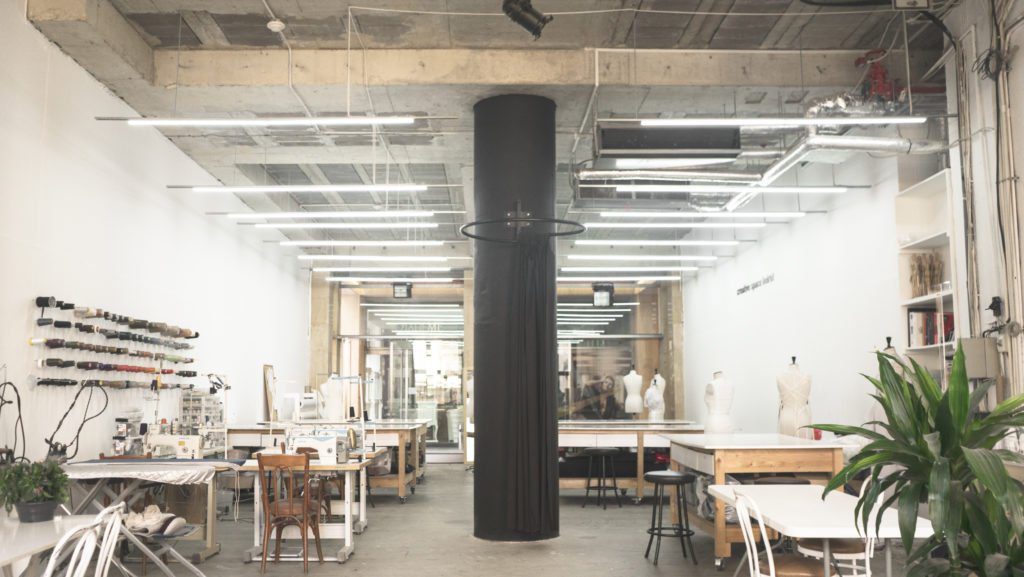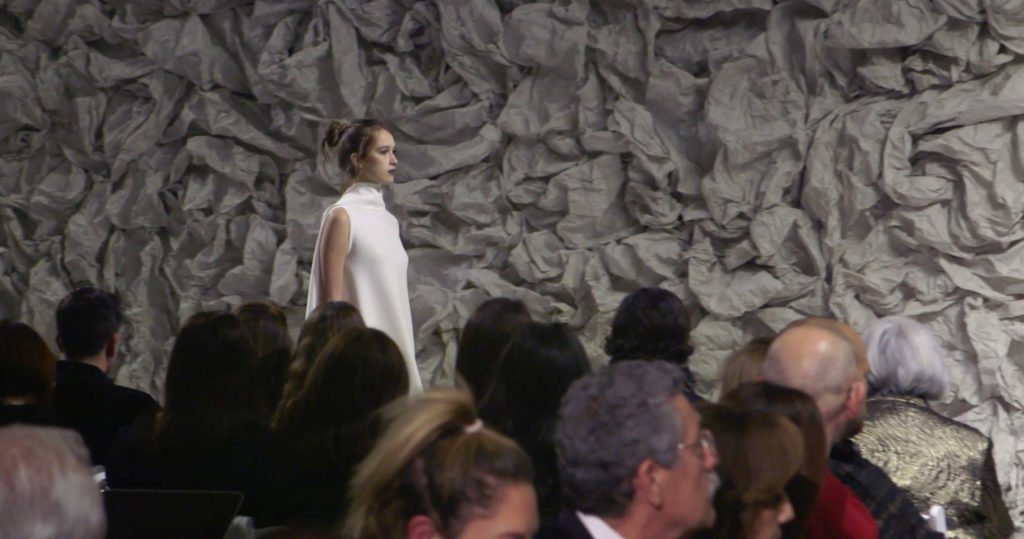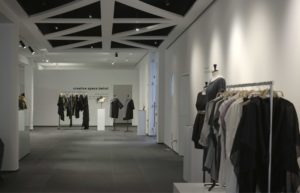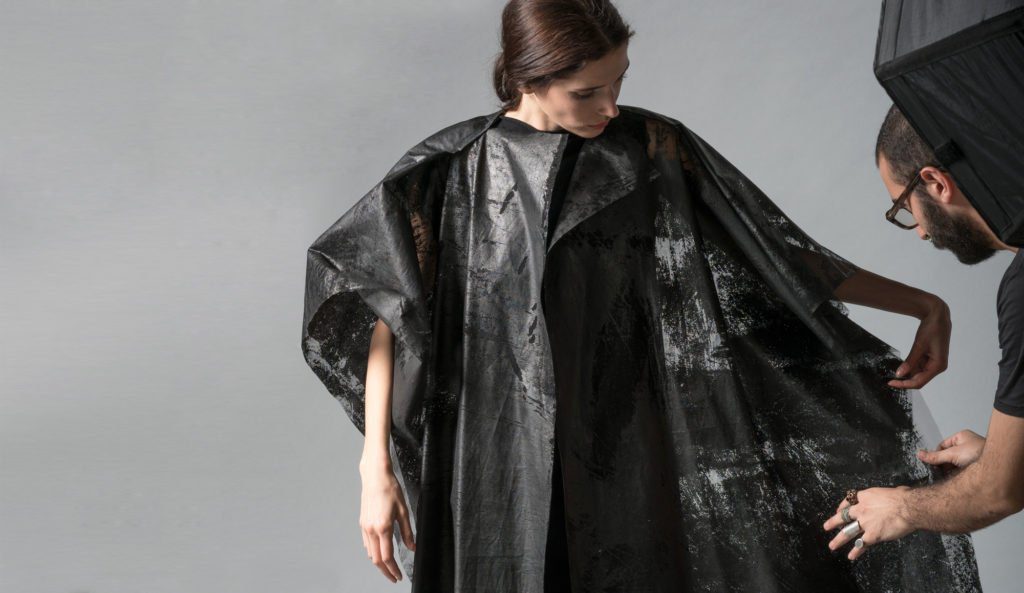I always thank this monthly column because it makes me meet and interact with extraordinary people from all corners of the world; last month Huda Baroudi of Bokja Design ‘nominated’ as guest of the March interview Sarah Hermez, a Lebanese designer and founder of ‘Creative Space Beirut‘, a free school of fashion design based in Beirut and offering quality education to talented persons who do not have the resources to study at institutions that have very expensive fees.
The interview with Sarah has been a source for me to further deepen meaning of the term ‘sustainability’, in this case linked not only to the practices of ethical fashion but also and above all to create those conditions for which those with passion and talent for this sector can express them by overcoming the barriers of class and economic conditions. But I give Sarah the floor, who knows better than me the how and why of her ‘creative’ choices, also become ‘existencial’.
Sarah, I read you studied at Parsons in New York; what made you come back to Beirut to launch Creative Space?
When I was in New York I was doing a double major, studying fashion design at Parsons, and media and culture studies at Eugene Lang. It was the perfect combination of what I loved most. At Parsons I discovered my creative potential and met my mentor and co-founder of ‘Creative Space Beirut’, Caroline Simonelli. At Eugene Lang I did a few study abroad programs, I went to Dharmsala and lived with a Tibetan refugee family and studied Tibetan politics. I also went to Cambodia. These experiences radically changed the way I viewed the world and the work that I wanted to spend my life doing. After I returned to New York I realized I did not want to pursue fashion for the sake of fashion, I wanted to find a way to merge my two passions: creativity and social justice. I decided to move to Beirut because I am Lebanese and never lived Lebanon, there is so much work to be done in Lebanon so it only made sense. ‘Creative Space Beirut’ was born.

Would you like to tell me something about the activities of the school and if there are courses related to sustainable design? I know that the students design collections are featured and sold in public exhibitions at the end of the year, that’s a nice thing…


‘Creative Space Beirut’ is a three year program in fashion design. We search for individuals from across Lebanon who are talented, dedicated, passionate but lack the resources to pursue an education, and we give them an entirely free education for three years. We have built a diverse and well rounded curriculum, providing courses in pattern making, draping, illustration, to english, presentation, the history of fashion and the business of fashion. The students have also collaborated with boutiques, designing collection and learning about production which provides them with a realistic understanding of the industry. The second and third year students work on collections which are then exhibited in a fashion show and sold, the income generated go back to support the school. The fabric that the students use are donated fabric from Donna Karan, Derek Lam, Diane Von Furstenberg (through the Parsons connection) as well as local designers and distributers, meaning they work with beautiful high quality fabric that come from old stock. The students have also worked on up-cycling projects and have had a few workshops on ethical design.


The question I am about to ask you was also addressed to my two previous guests, Sass Brown and Huda Baroudi: what approach do the creatives of your city have with sustainability? I am interested not only because this is an eco-fashion blog but also because I believe that your country is a rich crossroads of cultures and influences and from my first approaches I seemed to understand that there is a lot of openness and creative ferment.
Lebanon is definitely a country that sparks creativity, perhaps even in spite of the challenges. But is also a country that causes much frustration, due to unnecessary obstacles in day-to-day life. It tends to instill hopelessness, a sense of paralysis. In the past seven years of living here I have witnessed the creative sector grow, collaborations being born, but I have also witnessed many creatives leave the country in the search of a more stable and sustainable future. The market in Lebanon is small, yet growing. We are not provided by much support from our government, but we are provided support by private entities and supporters. It takes endurance and perseverance to survive here, but nevertheless I see lots of like minded individuals coming together and using designs as a medium to tackle our sustainability issues.
You know, Sarah, opening this blog I had and still have the good fortune to know people and realities related to the sustainable world and I increasingly realize that these realities are multi-faceted and that the very term of ‘sustainability’ has different meanings. In the case of your school, free and open to those who can not afford a school fee, I think it means also equal opportunities. What do you think?
Definitely. We are tackling sustainability on many fronts. Sustainability also means a self sustainable local economy, and creating an environment in which talent can thrive. Today, we live in a world that is so tuition and degree driven that the majority of talented people are left out of the design process. There is so much wasted talent in Lebanon, and we believe in the power of free education to create balance and equal opportunity. Unfortunately, our government is trapped in a political gridlock, and is so corrupt that it barely provides us with our basic needs, even water and electricity are a struggle here.


Dar El Nimer in 2016
In order to build this free school, sustainability in a larger sense was our first issue. How can we survive? How can we grow? Apart from selling our students collections, we launched our own in-house brands in which a percentage of the profits go back to the school. This way, we can hopefully reach self-sustainability through selling our products. These brands also serve as a platform to hire students after they graduate, as well as provide them a space to launch their careers. We also produce entirely locally, supporting tailors and artisans in the country, and ensuring ethical practices in our process. In order to sustain the school, we have built an eco-system, from education to employment.


A great example of circular economy, Sarah! I know you have also your own brand, SECOND st., at this point I guess it’s one of your in-house brands. Can you tell me how and when it was born, what is about, etc.?
Second St is one of our in-house brands in which a percentage of profits go back to support the school! Second St was conceived in 2nd St, Alphabet City, NYC, where both I and my partner Tracy Moussi lived while attending Parsons the New School for Design. Disillusioned with the fiercely consumer-driven nature of the fashion world, we set out to create an alternative path through which the production of urban and dynamic clothing could help foster the talent of budding designers. So we devised a plan to support free creative education in a partnership with Creative Space Beirut. Partnering with George Rouhana, Second ST., a socially conscious brand with a playful take on the classic shirt, was brought to life in Beirut. Again, we also use local production avenues to ensure ethical practices and to support the local economy.
Well, Sarah, we are at the end of our interview; you do not know how I have been pleased to meet you, it is comforting to know that in this sector there are people who go beyond the logic of profits and tendencies. On the other hand it would not be called sustainable fashion if it did not have as its basis principles and values that take into account the welfare of others, be it man, environment or animals.
I do not ask Sarah Hermez to ‘nominate’ the next guest because in April and specifically on April 23rd, the usual day of the release of ‘The monthly interview’, the Fashion Revolution Week will begin and there will be a guest (Italian!) to represent it … I will not let you know more, follow us and you will discover it!


















